Like most of the world, we’ve been learning at home the past few weeks. Fortunately, we’ve also been building our library of children’s reference and educational books for a while so we have plenty of options to help make schooling at home both fun and educational.
Quarto Books recently sent us a selection of non-fiction books that I think would make a great addition to any home library. Read on to learn more about these entertaining and educational books and enter the giveaway for your own copies of Illuminature and Illumanatomy!
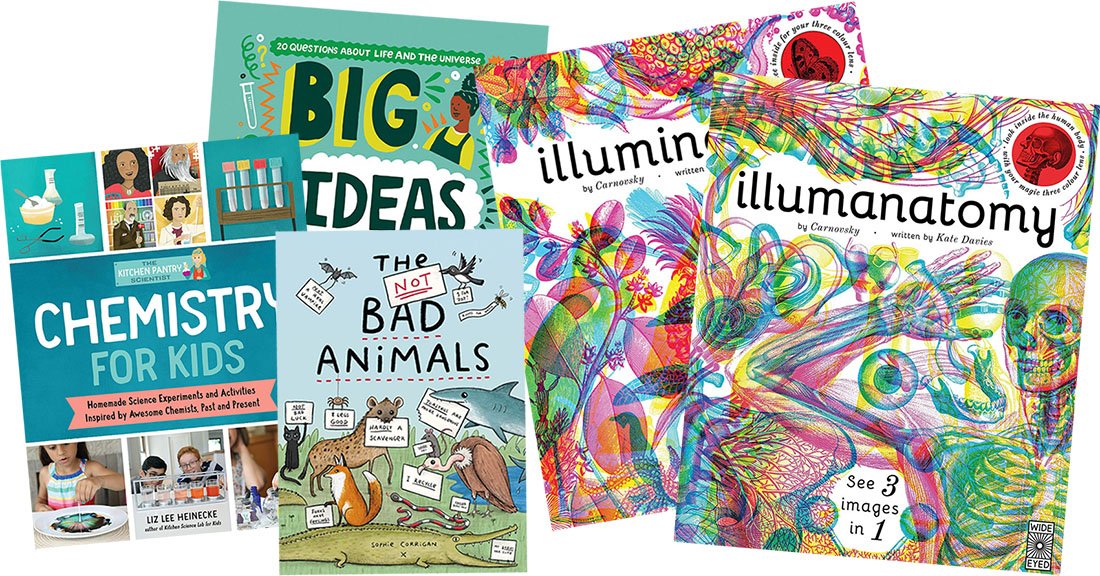
Click on the titles or cover pictures to see these books on Amazon.
The Kitchen Pantry Scientist: Chemistry for Kids
by Liz Lee Henicke
Kids are missing out on science fairs and class experiments this spring, but with the help of this fascinating guide, they can still have fun exploring science at home. Following in the footsteps of 25 different scientists through the ages, they can learn a little about notable figures from the field of chemistry and try their hands at an experiment or activity that relates to that particular scientist’s work.
Get inspired by Anna Jane Harrison’s work on flash photolysis by discovering how ultraviolet light breaks down organic dyes molecules. Younger children can learn about surface tension using dish soap and alcohol like Agnes Pockels, the founder of surface chemistry. The crystallography experiment below shows you how to grow three different types of crystals in honour of Margaret Cairns Etter, an American educator who was one of the first to investigated “jumping crystals.”
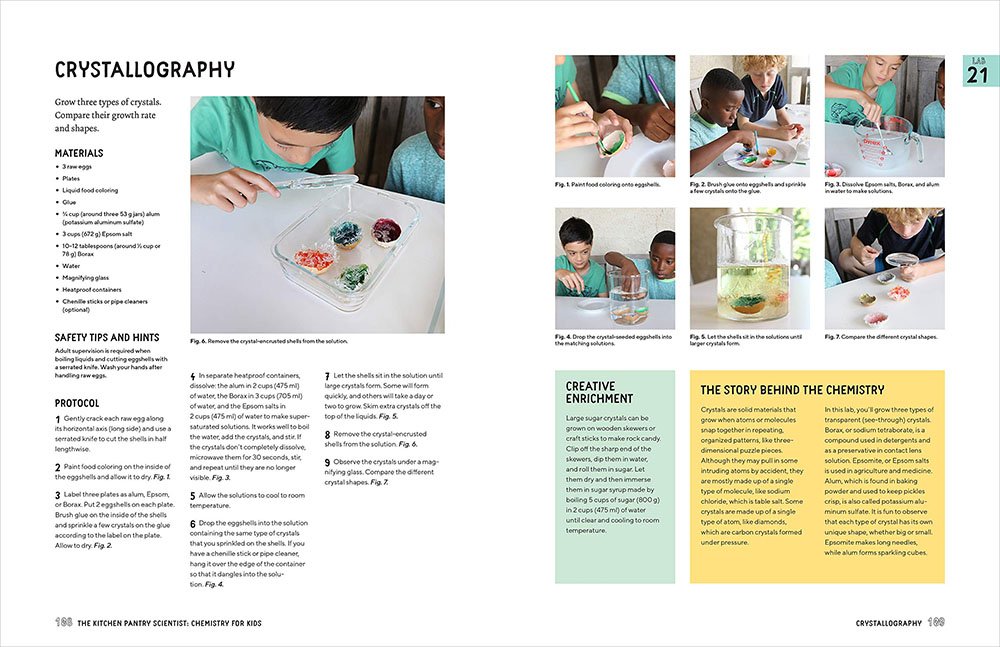
Click to see larger.
Each of the 25 “labs” starts with a snapshot of a scientist known for their work in chemistry that teaches kids a little about each historical figure, their work, and its modern applications. Step-by-step illustrations show kids how to carry out an experiment related to that scientist’s work. Most of these use supplies you probably already have around the house, and a few others require inexpensive items you can easily pick up online. For each, “The Story Behind the Chemistry” explains the concepts and principles behind the experiment and why it works, and a “Creative Enrichment” box suggests ways to extend the experiment for kids who want to learn more.
There are lots of books out there that show kids how to do science experiments, and to be honest many of them cover pretty similar material. This one stands out for the way it adds historical context and because most of the scientists and experiments presented here were new to us. As a mother of girls, I really appreciated how many women were included in its pages, not just Marie Curie. (Ages 8-12.)
Big Ideas For Young Thinkers
by Jamia Wilson and Andrea Pippins
Got an irrepressibly curious kid who never stops asking questions? Give her this book.
Organized into five sections covering the broad areas of identity, life, truth, culture, and creativity, Big Ideas for Young Thinkers introduces and attempts to answer some of the biggest questions that have stumped humans from the beginning of time. How do I know I exist? What happens when we die? Is God real? What is right and wrong? What is freedom? Is an ideal society possible? What is a soul?
Each two-page spread starts with one of those big abstract questions then applies it to their real experiences in a way that makes sense to kids. It’s philosophy as it was meant to be – relevant to everyday life. Jamia Wilson’s clear and engaging writing is peppered with first-person stories from her own childhood and enlivens a subject that could be on the drier side.
Wilson presents information and ideas from a wide variety of famous thinkers, writers, and authors from ancient China through to modern times, and then challenges kids to think critically and analytically about these questions for themselves. I really appreciate that she has made sure to include women and people of colour in her sources. This is a wonderful resource for prompting important conversations at home, especially now when we’re spending more time thinking about what’s really important. Includes a timeline of important thinkers, glossary, and index in the back. (Ages 9-13.)
The (Not) Bad Animals
by Sophie Corrigan
“Listen up, humans! We’ve heard you talking about us animals, and we know that you’ve been giving us a BAD reputation! You say that we’re spooky and ugly and creepy and crawly and icky and ewwy and downright gross. But these are rumors and they’re just plain MEAN.”
Not just another book about animals, this cute and engaging book spotlights 38 animals that people often find scary or gross. Personally, it’s spiders and centipedes that creep me out, but this book includes lots of other misunderstood creatures like rats, bats, slugs, sharks, crocodiles, and wasps.
For each animal, a two-page spread shows some of the unfair or wrong characterizations and old wives’ tales that give them a bad reputation. Sophie Corrigan’s cartoon drawings show them as scary (but not too scary!) animals with red eyes and threatening expressions.

Click to see larger.
But turn the page and see that same animal in a whole new light. Now they’re depicted as cute and cuddly creatures. Discover the facts instead and learn about the important role each plays in their ecosystem. A large text box lists more interesting facts about these animals and how they live, eat, and reproduce.
When it comes to spiders, a common belief is that people swallow an average of eight of them every year. Well, Miss Spider debunks this myth and explains that spiders eat bugs and serve as a vital food source for birds, frogs, lizards, and even other spiders. Did you know that relative to its weight, spider silk is five times stronger than steel?
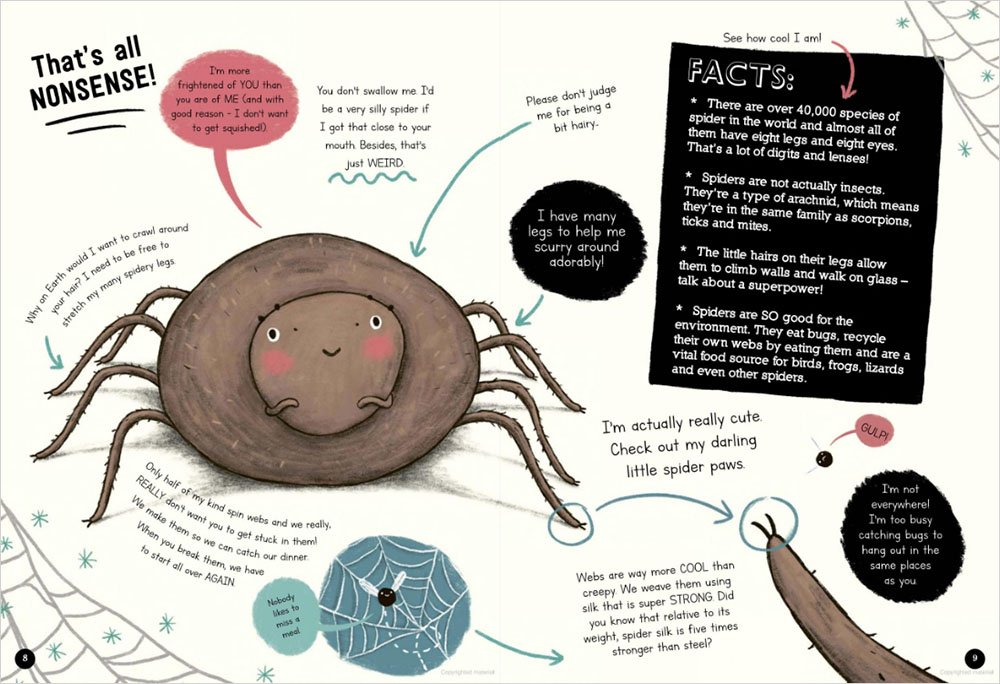
Click to see larger.
The illustrations are the real treasure here. Corrigan has packed so much personality and charm in each portrait. Vultures, centipedes, slugs, and even dung beetles and balls of poop are somehow cute when she draws them! (Ages 5-10.)
Illuminature
by Rachel Williams and Carnovsky
When we visited the Denver Museum of Science and Nature last year, we spent a lot of time in the kid-friendly and interactive Our Senses: Creating Your Reality exhibit. One of the rooms in this exhibit was covered in pictures of animals with coloured lights rotating through the room magically showing different animals depending on the colour of the light. It was a very cool experience, and this book lets you bring the same experience home.
The first things my kids said when they opened the first page?
“This is so cool!”
“How do they do this, Mommy?”
“It’s like magic!”
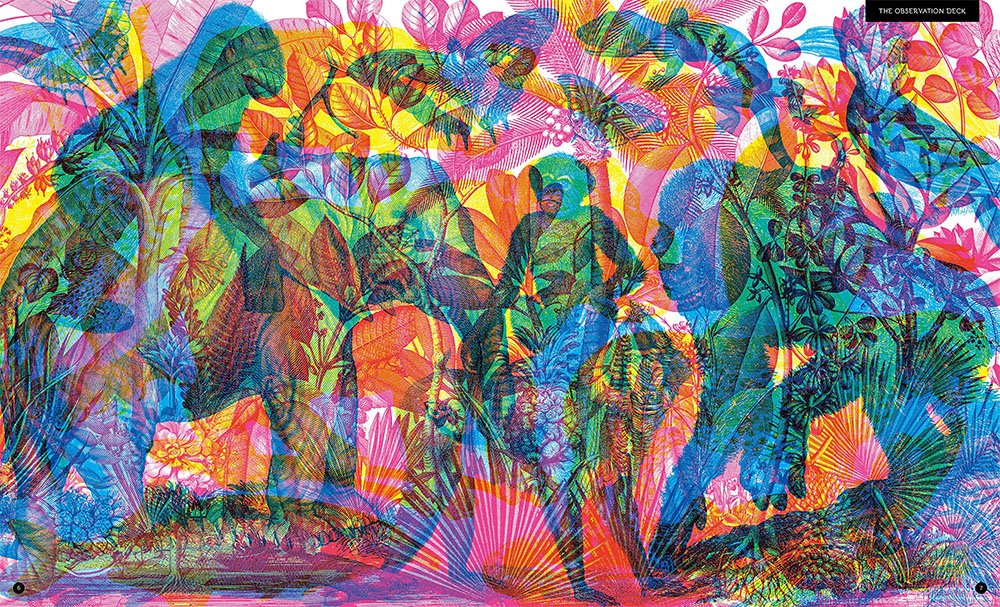
Click to see larger.
This extra large book is just the right size to lay on the floor while your child pores over the illustrations. What first appears to be a cacophony of pink, blue, yellow, and green photos overlayed on each other becomes clear when you look through one of the three coloured lenses in the included viewer. Looking through the red lens reveals the daytime animals, the blue lens shows the nocturnal animals who live in the same space, and the green reveals the plants that make up the animals’ habitat.
The red and green lenses work well to reveal their respective images, but it’s noticeably harder to see the nighttime scene through the blue lens. A pocket on the front inside cover holds the viewer, but unfortunately it only comes with one viewer. A second one would be so useful for siblings to use together or as a spare should one viewer be damaged (the frame is cardboard) or lost.
Explore life in the rain forest, a desert, atop mountains, and under the sea. Illuminature features ten of the world’s most diverse environments: the Congo Rainforest; the Simpson Desert; Loch Lomand; the Andes Mountains; the Weddell and Ross Seas; the Redwood Forest; the East Siberian Taiga; the Serengeti Plains; the Ganges River Basin; and the Apo Reef. Each shows nine daytime and nine nighttime animals for a total of 180 animals.
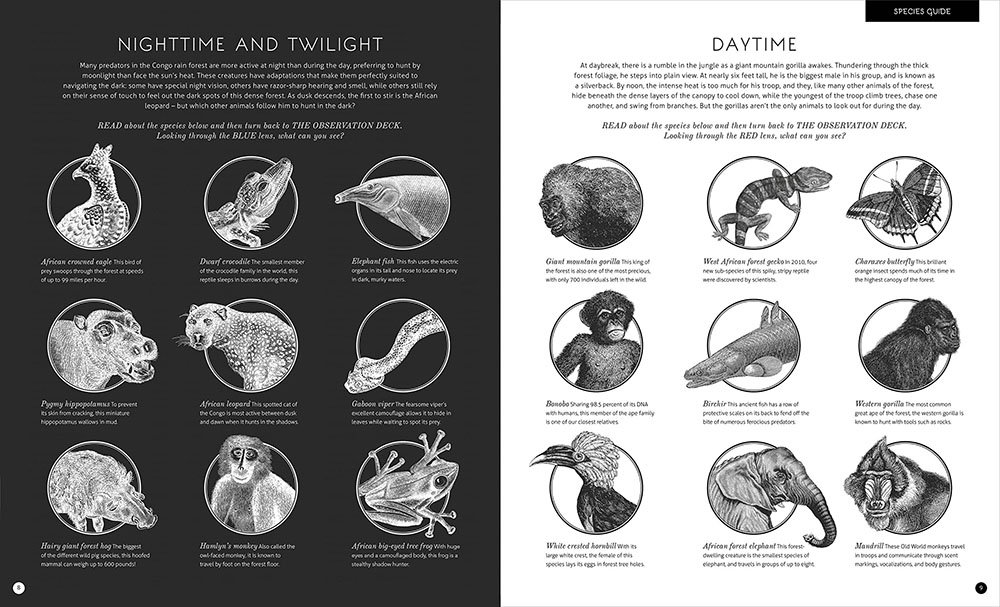
Click to see larger.
Each section follows the same format. The first double-page spread introduces the key facts about the habitat with a brief description and a quick reference box listing the continent, counties, habitat, size, and diversity of species living there. Then comes the “Observation deck,” a colourful two-page spread that kids can spend hours poring over looking for and identifying all the animals hidden in the kaleidoscopic images. Finally, there’s a species guide with one black page showing nine daytime animals and a white page showing nine twilight and nocturnal animals.
There’s so much to see and learn on every page. I guarantee your kids will come back again and again for hours of independent entertainment and education! (Ages 7-12.)
by Kate Davies and Carnovsky
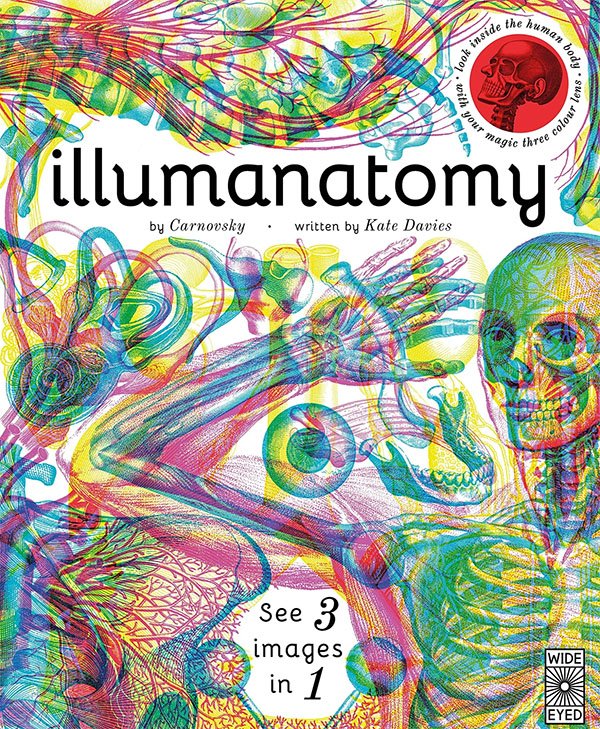
The next book in this innovative series is Illumanatomy, doing for the human body what Illuminature did for animals. Look inside the human body and see how everything works together. The red lens reveal the skeleton, the green lens shows the muscles, and the blue lens shows internal organs and blood vessels. Again, the blue scenes are more difficult to decipher than the other colours.
Selected as a 2019 Outstanding Science Trade Book for Students K-12 by the National Science Teachers Association and Children’s Book Council, this book introduces the human body overall, then takes a top down approach covering the head, eyes and ears, mouth and news, heart (circulatory system), ribs and lungs, abdomen (digestive and urinary system), reproductive system, arms and hands, and legs and feet.
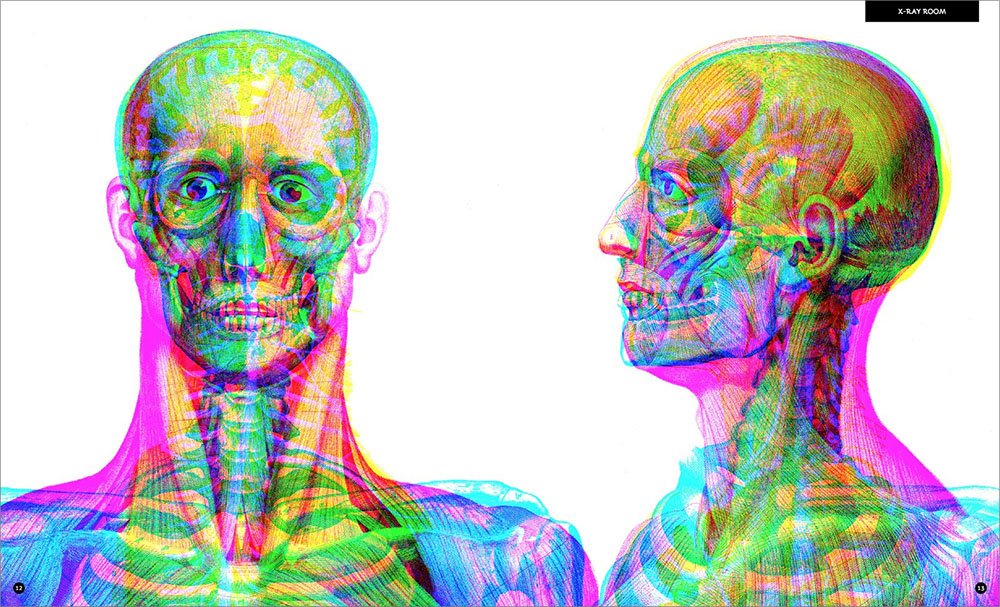
Click to see larger.
This book has a similar format to Illuminature. The first double-page spread introduces a key area or system of the body with a brief description and a quick reference box listing what you can expect to see with each lens. Then comes the “X-ray room,” showing the different layers of anatomy, and then the “Anatomy room” labelling each part.
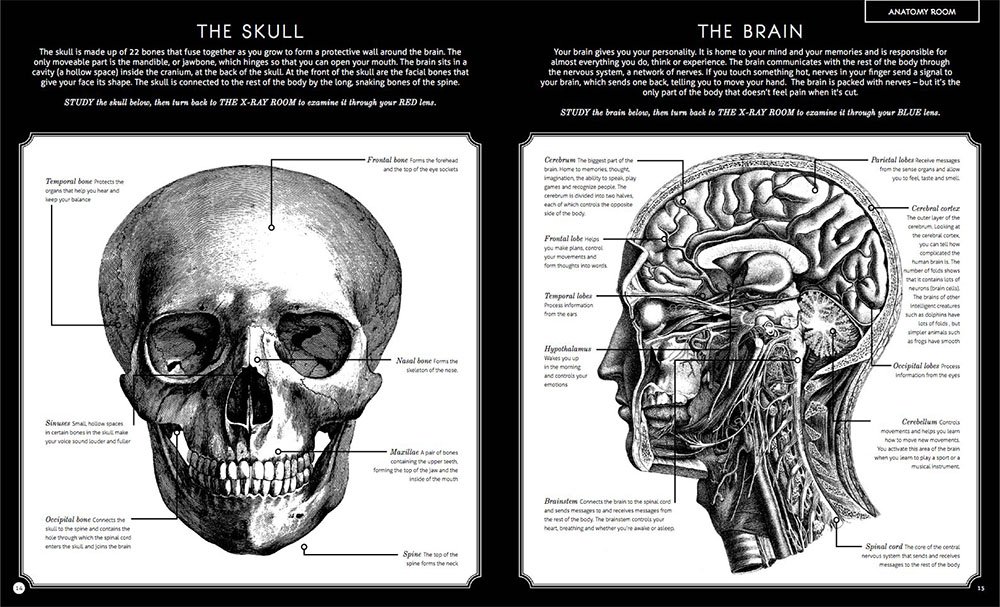
Click to see larger.
This is another fascinating entry in this series of books that will have the kids poring over the pages over and over again. (Ages 7-12.)
Win Illuminature and Illumanatomy
Here’s your chance to win my kids’ new favourite books – Illuminature and Illumanatomy. Your kids will spend hours flipping through these pages! Enter in the giveaway widget below. This giveaway is open to residents of Canada and the US, 18+. All the winner’s entries will be verified.
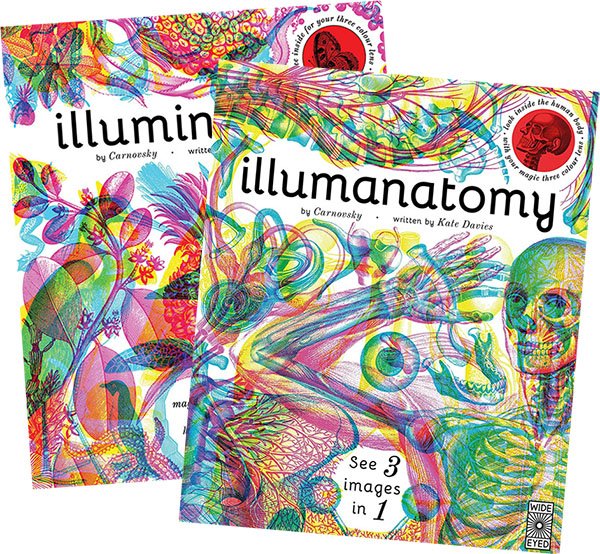
Click here to check out my other open giveaways and be sure to follow me on Facebook!
Disclosure: I received sample items to facilitate this post. All opinions expressed are completely honest and my own, based on my personal experience. Your experience may differ. This post contains affiliate links. As an Amazon Associate I earn from qualifying purchases, at no additional cost to you.


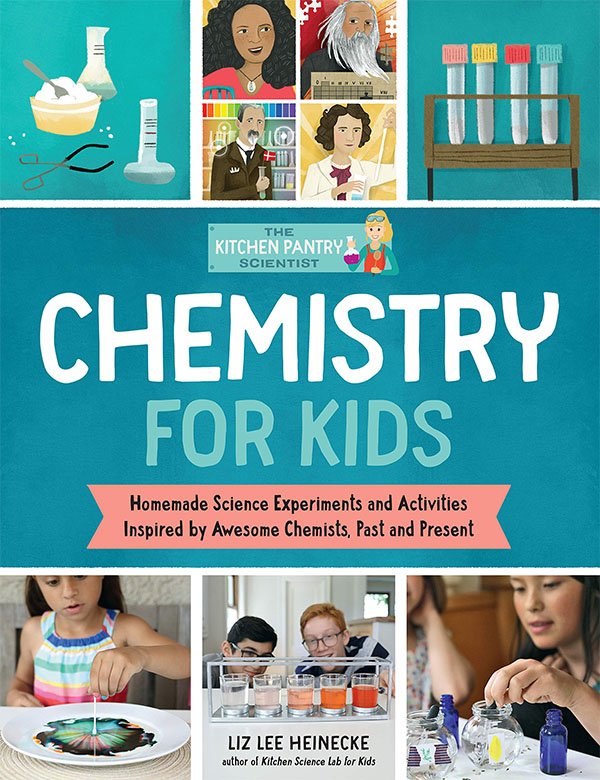
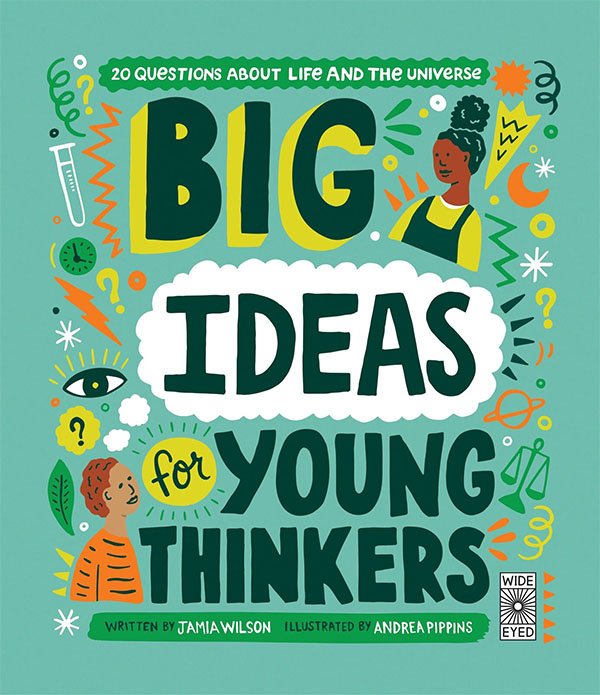
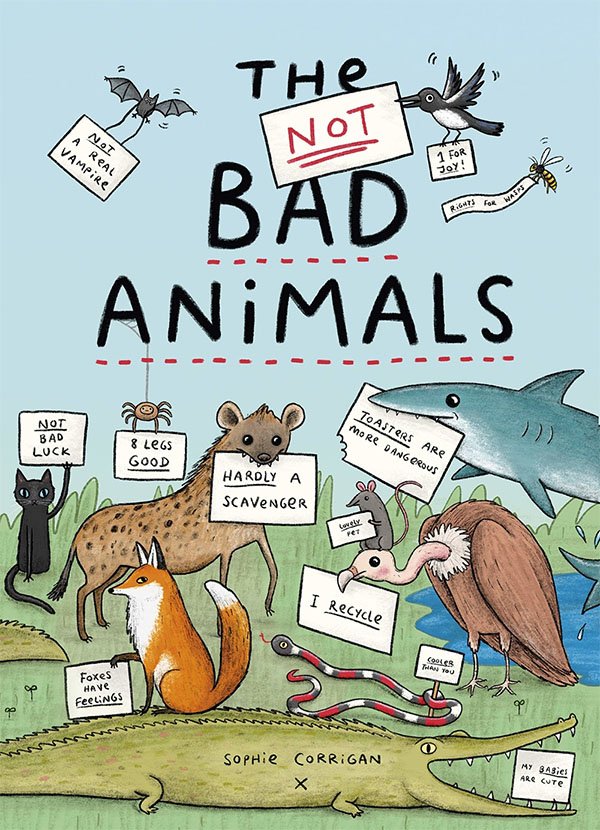
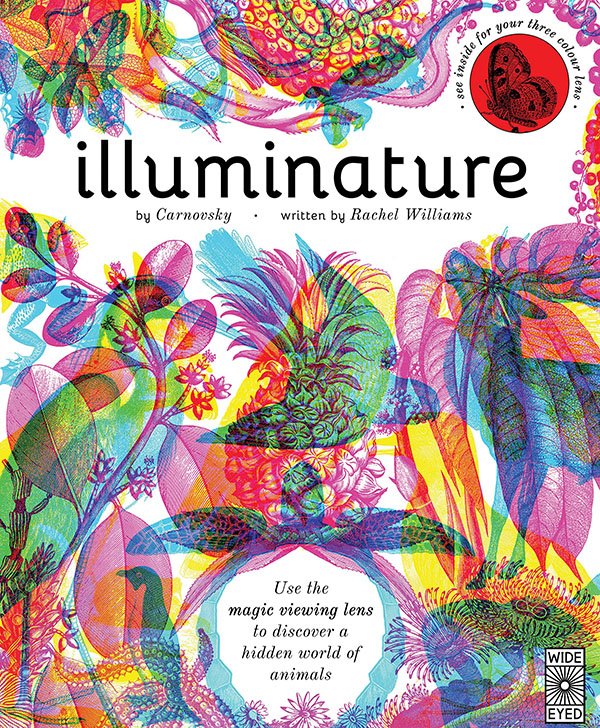
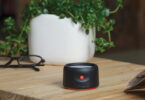
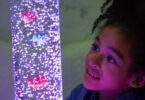
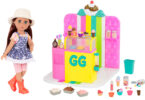
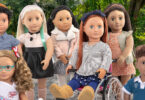
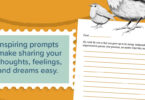
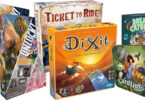
My kids & I are leaning lots of patience in our home! 🙂
Learning to bake muffins.
Aside from fractions and telling the time, how to fold laundry and bake.
My granddaughter continues to do her schoolwork at home and has learned to bake all kinds of desserts.
My kids are learning math through folding origami.
my grandson became interested in cooking
My granddaughter has been reading a lot and writing short stories.
My grandkids are doing school work and learning to bake.
My granddaughter is learning patience and to cook and clean, and for only being 5 she is doing such a great job, and she is learning to read as well, she would love these books to add to her library
The children here have been planting a small vegetable garden. They have really been enjoying learning how to do this.
We are working on learning to read and the science of baking!
My kids are currently learning about insects. We are also exploring nature and observing plants and animals.
we got to learn all about putting a cast on an arm this past weekend.
We are learning how to bake new foods!
MY granddaughter grade 1, is learning to read in French! She started at school but she’s getting really good.
My grandson made a bread dough to make homemade pizza. With the rest he made bread buns. They look pretty amazing too.
We’ve (my 5 and 3yr old and I) have been working on our alphabet and reading 🙂 also cooking!
My granddaughter is fascinated by mushrooms so that is our new learning experience along with a mushroom growing kit.
My grand children are learning their school subjects on line with teachers and student groups, as well as Fortnite and basketball!!
My granddaughters are learning how to identify different animal tracks.
My grandchildren are learning to bake.
Last week we taught the children how to change a tire. This week they built garden boxes.
We are learning how to cook and garden
my kids and I started a yoga class online. super fun
My oldest daughter is learning to make bread at home, and it’s delicious! She earned a sourdough starter as a prize from a distance learning home ec class competition, so we picked it up from her school last week and she’s been baking yummy loaves of bread every couple of days since. Today she is baking another loaf for us, our next door neighbours, and her grandparents. I didn’t realize what a time investment it would be, but luckily we have lots of time right now!
My Kids an I are learning to make pies at home and the part that is taking the most learning is rolling out and making the pie crust,it’s been a long journey lol!
We are doing a lot of baking by scratch. Cookies, cakes and breads. The kids are really enjoying it.